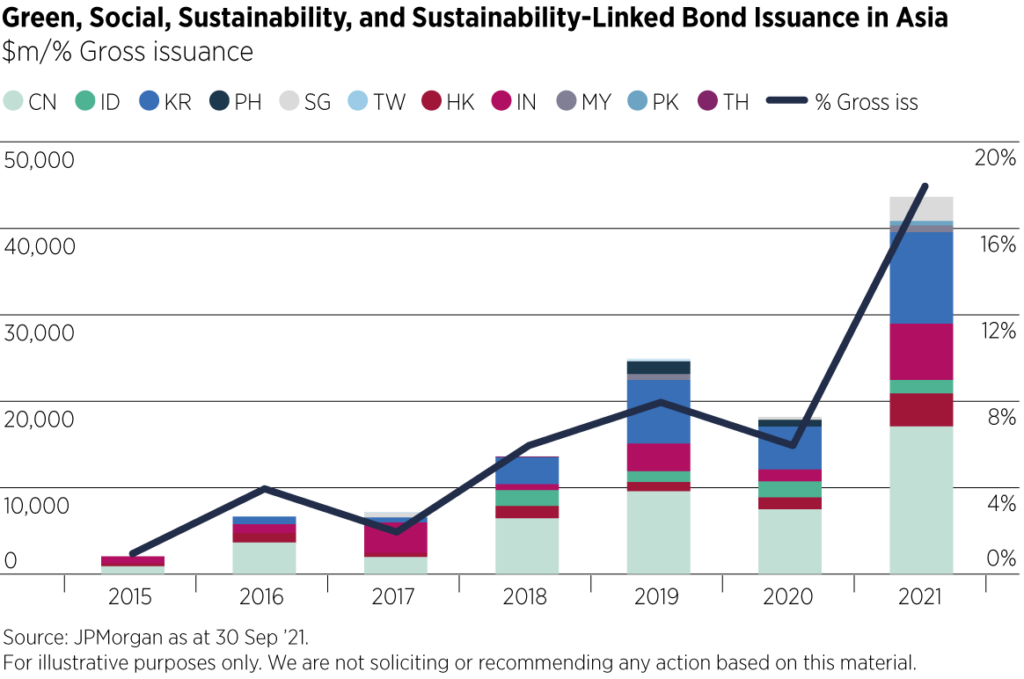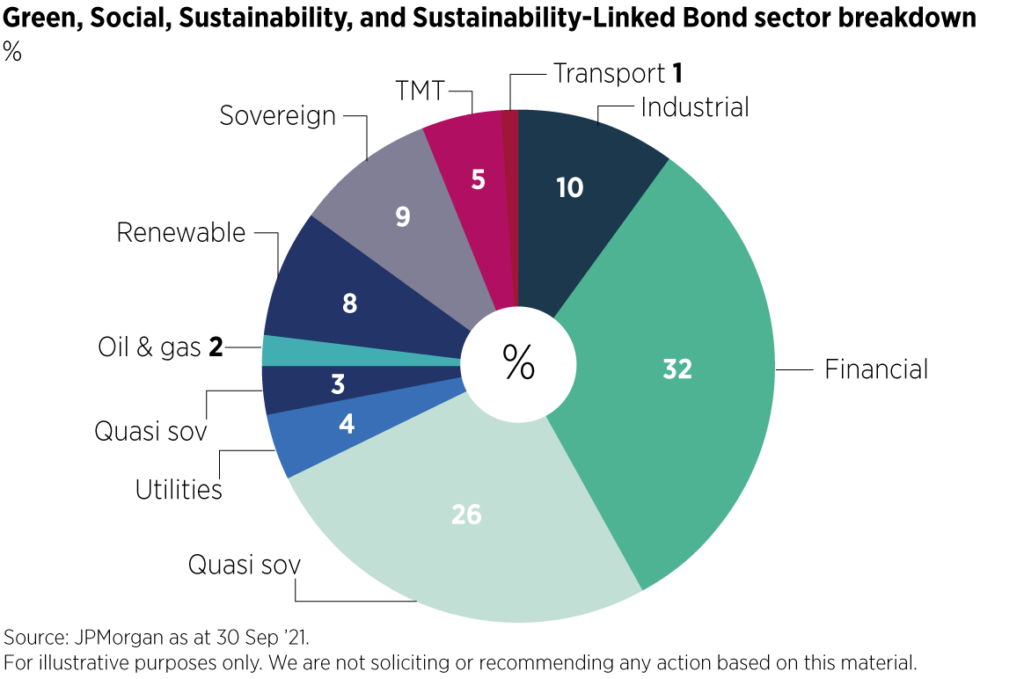Asia occupies a unique spot at the intersection of sustainability and finance, with 99 of the 100 riskiest cities for environmental and climate-related threats located in Asia.
In recent years, the region’s largest economies have announced timelines toward carbon neutrality, measures to reduce greenhouse gas emissions, and investments in cleaner energy sources, electric vehicles, and other green technologies in a bid to stem climate change.
This investment environment presents exciting new frontiers. On one hand, capital dedicated toward ESG investments is growing; on the other, opportunities for capital appreciation increase as companies bridge ESG gaps.
That said, the integration of ESG factors into investment processes is still relatively new in Asia compared to the US and Europe. Yet our experience shows that ESG factors have a measurable impact on outcomes in areas such as credit quality, defaults, and spreads. ESG investing likewise offers the advantage of a more nuanced approach to identifying risks and opportunities.

Environmental considerations are under the lens
Regulations and institutional investor demand are the main drivers of environmental considerations in Asia. In certain sectors (including energy, metals and mining, and utilities, among others), environmental factors play an increasingly critical role due to growing awareness of climate change and sustainable financing.
For example, the Asian palm oil industry, which produces the bulk of global supply, has been subject to scrutiny for its alleged role in deforestation and destruction of wildlife, and in recent years, large institutional investors have divested their holdings in the sector. Bonds of Asian palm oil companies have seen periods of volatility following negative news. In 2018, we passed on a maiden bond offering of an Asian palm oil company because of its noncompliance with industry sustainability standards. The bond has been trading at distressed levels since 2019.

Social factors are increasingly important
Social policies have taken greater priority in some governments’ agendas. China’s pivot toward “common prosperity” policies in 2021 underscored the focus on sustainable and fair business practices. While the policies have upturned the after-school tutoring, online gaming, and property sectors, over the long term, sectors and businesses aligned with these new policies are expected to benefit.
Even before this policy shift, we saw how a strong social focus can translate to investment opportunities. We invested in one of the largest urban rail systems in China, which has an estimated average daily ridership of 10 million. Ticket prices are set low, with the company putting greater emphasis on its mandate of providing a public good. While we tend not to favour Chinese local government financing vehicles, given their sometimes weak financial profiles, this company had a high ESG score. It maintains a strong safety record and a good relationship with its workforce – factors reflected in the bonds’ spread, which remains stable compared to top-tier state-owned enterprises.

Governance gains prominence
Corporate governance is critical in Asian fixed income investing, with the ownership structure directly impacting default risk.
For instance, in one case an issuer marketed itself as a “state-owned enterprise” during a bond roadshow, but declined to discuss details of the formation of its board of directors. State-owned enterprises may offer creditors added confidence in the form of a potential backstop or an implicit guarantee by the parent entity in the event of financial difficulties or default. In this case, however, we found that the issuer’s shareholding structure was complex and determined that the company does not meet the definition of a “state-owned” firm. Our analysis led us to pass on the bonds, which later defaulted.
Moreover, governance-related lapses have cost bondholders in Asia billions of dollars over the years. One notable case in the past decade involved a Hong Kong-listed Chinese timber company, whose CEO and controlling shareholder embezzled millions from the company. Its management also admitted to fabricating the company’s assets and revenues. The company defaulted three months after it issued a US dollar bond.
Asia’s evolving ESG landscape
Challenges remain. Unfortunately, we have yet to see a consistent green/ESG bond premium in Asia green bonds. Sustainability-linked bond issuances are a positive development, but issuers often have below-average ESG characteristics alongside unambitious targets or negligible incentives to work toward achieving those targets.
That said, we expect growing investor interest in sustainable investing in Asia will drive greater focus on ESG for issuers, investors, and asset managers alike. This scrutiny is vital to make meaningful progress.








